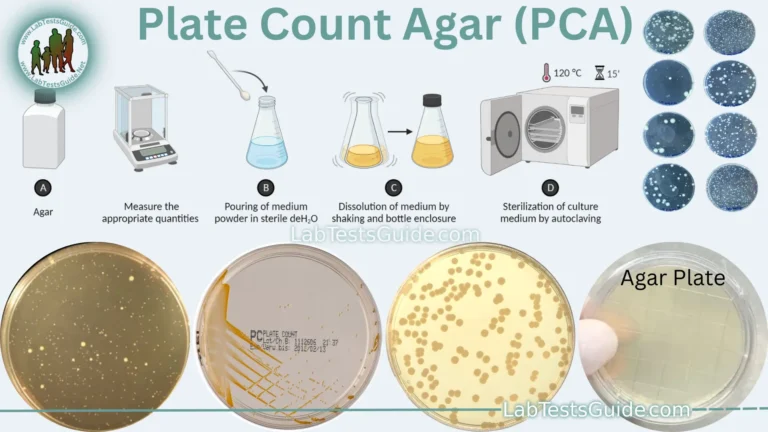Haematoxylin and Eosin (H&E) staining is the most widely used method in histology, specifically targeting diagnostic substances. It highlights structures like amyloid, lipids, and pigments by binding acid-reacting cell components with alkaline dyes and vice versa.

Delafield Haematoxylin, a variant of haematoxylin stains, produces intense blue-violet staining of cell nuclei and basophilic structures. Known for its high color intensity and long shelf life, it’s ideal for differentiating cell nuclei in histological analysis and is often used with eosin for detailed tissue examination.
Uses of Delafield Haematoxylin:
- Nuclear Staining: Provides intense blue-violet staining of cell nuclei, enhancing visibility in histological samples.
- Histopathology: Essential in diagnosing diseases by differentiating cellular structures within tissue samples.
- Cytology: Applied in staining cell smears for detailed examination of cellular morphology and abnormalities.
- Routine Tissue Staining: Commonly used in the Haematoxylin and Eosin (H&E) staining method for routine tissue analysis.
- Research Applications: Valuable in research for studying cellular structures and tissue morphology under a microscope.
- Differential Staining: Often combined with other stains like eosin to differentiate various tissue components.
Composition of Delafield Haematoxylin:
| Component | Amount |
|---|---|
| Haematoxylin | 4.0 g |
| Ammonium Alum | 8.0 g |
| Potassium Permanganate | 0.2 g |
| Ethanol, Absolute | 125 ml |
| Distilled Water | 400 ml |
Preparation of Delafield Haematoxylin:
- Weigh Haematoxylin:
- Weigh 4.0 g of haematoxylin and transfer it to a bottle or flask.
- Dissolve in Ethanol:
- Measure 125 ml of absolute ethanol and add it to the haematoxylin.
- Place the flask in hot water (avoid open flame) to help dissolve the haematoxylin. Cool and filter.
- Prepare Ammonium Alum Solution:
- Weigh 8.0 g of ammonium alum.
- Dissolve in 400 ml of hot distilled water (40–50 °C). Mix with the filtered haematoxylin solution.
- Add Potassium Permanganate:
- Dissolve 0.2 g of potassium permanganate in 10 ml of distilled water.
- Add to the stain mixture to ripen it, enabling immediate use.
- Label and Store:
- Label the bottle and store at room temperature.
- The stain is stable for several months.
Precautions:
Precautions for Preparing Delafield Haematoxylin:
- Avoid Open Flames:
- Use a water bath instead of direct heating, as ethanol is highly flammable.
- Ensure Proper Ventilation:
- Work in a well-ventilated area to avoid inhaling fumes.
- Wear Protective Gear:
- Use gloves, safety goggles, and a lab coat to protect against chemical exposure.
- Handle Chemicals Carefully:
- Handle all chemicals, especially potassium permanganate and ammonium alum, with caution to prevent spills and skin contact.
- Label and Store Correctly:
- Properly label the stain and store it in a sealed container at room temperature, away from heat.
- Dispose of Waste Safely:
- Follow lab protocols for disposing of chemical waste and contaminated materials.
Uses of Delafield Haematoxylin in Clinical Laboratories:
- Nuclear Staining in Histology:
- Facilitates precise staining of cell nuclei, enabling clear differentiation of nuclear structures in tissue samples.
- Histopathological Diagnostics:
- Plays a crucial role in the diagnostic evaluation of tissue samples, aiding in the identification of pathological changes and disease states.
- Cytological Examination:
- Employed in cytology to stain cell smears, providing enhanced visualization of cellular details necessary for detecting abnormalities and malignancies.
- Routine Tissue Examination:
- Integral to routine histological protocols, especially in the Haematoxylin and Eosin (H&E) staining procedure, for general tissue assessment.
- Assessment of Basophilic Structures:
- Used to stain basophilic structures within tissues, contributing to the comprehensive analysis of cellular components in various medical conditions.
- Research Applications in Cellular Morphology:
- Extensively utilized in research settings to investigate cellular morphology and tissue architecture under microscopy.
- Complementary Staining in Differential Diagnostics:
- Often used in conjunction with other stains, such as eosin, to achieve differential staining of tissue components, thereby enhancing diagnostic accuracy.
Possible References Used







